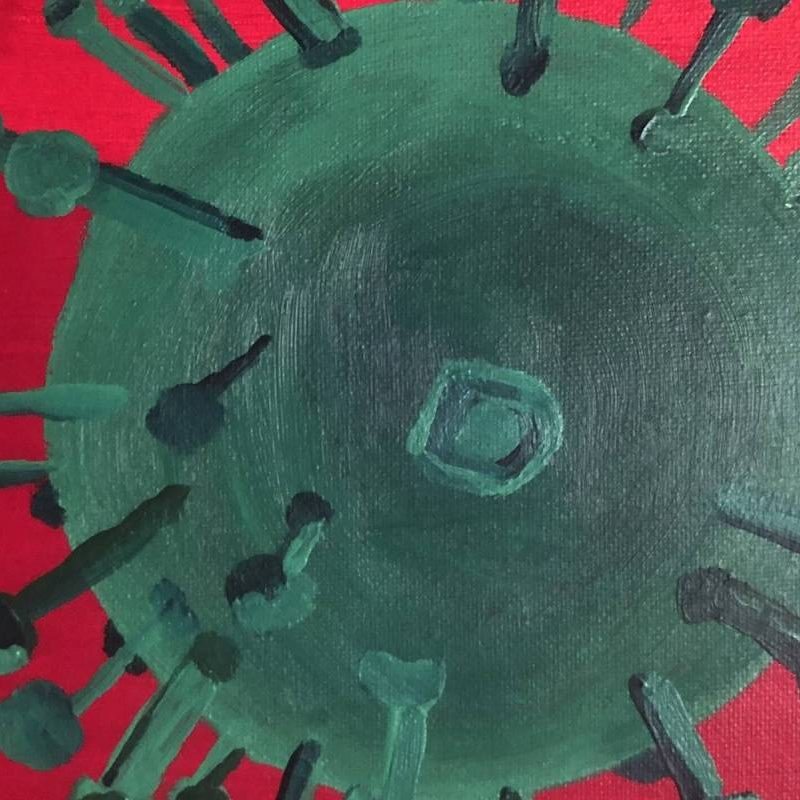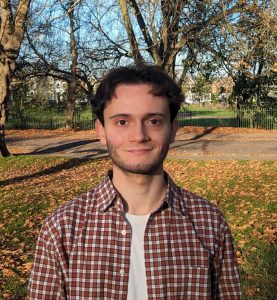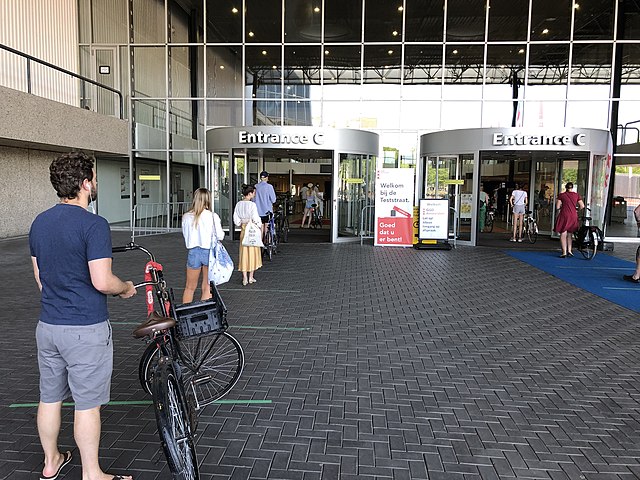This is the third annual report for the Center for Research on Pandemics & Society (PANSOC). As in previous years, we report here on our research mission, projects and funding applications, the team and institutional collaborations, and outcomes/activities.
1. Short presentation of the center – research perspectives and main goals
Mission statement: PANSOC examines contemporary and historical pandemics to understand social, economic, and biological risk factors and inequalities, and to improve pandemic preparedness.
PANSOC is the only global pandemic research centre that focuses on social science and humanities perspectives and conducts research on past pandemics. Similar pandemic research centres have been established at several prestigious universities following the COVID-19 pandemic, but we differ from others in that our researchers have extensive combined experience researching pandemics (25+ years) and our unique focus combines social science and historical perspectives. Most other pandemic research centers exclusively study medical dimensions and the most recent pandemics, meaning they ignore the diversity of pandemic experiences and outcomes, and are frequently limited to short-term perspectives that do not incorporate the full social and economic dimensions of pandemics. Our field of “pandemiology” is new internationally.
2. Research projects and funding applications
In addition to internal Centre of Research Excellence (CRE) funding at OsloMet, PANSOC’s research has been supported by several externally funded projects in 2023. These are:
PANRISK : Socioeconomic risk groups, vaccination and pandemic influenza, 2021-2024) (Research Council of Norway grant agreement No 302336). The project have mapped the socially vulnerable risk groups for influenza, seasonal influenza vaccine uptake by socioeconmic status, and carried out a systematic review and meta analysis on the associations between socioeconomic status and influenza pandemic outcomes. In this project, we have also studied the association between socioeconomic status and (non)pharmaceutical interventions during COVID-19 as well as determinants of COVID-19 vaccine hesitancy.
MERIT – MothER Income InequaliTy (eeagrants.gov.pt) (2022-2024). In collaboration with Portuguese partners (Instituto de Saúde Pública da Universidade do Porto, ISPUP) the MERIT project has studied the impact of motherhood in women’s income and careers (during COVID-19) and we have produced a combination of concrete public policy proposals to minimize asymmetries and promote gender equality in the labour market, especially through motherhood.
Social Science Meets Biology – CAS Grant 2022–2023. From August 15th, 2022, to 31st June 2023, we ran run a highly successful collaborative research project at the Center for Advanced Study that combined basic science research with high societal relevance. The CAS project used an interdisciplinary framework and a large international team to analyze the causes of disproportionate pandemic effects on Indigenous peoples, which is an important scientific and public health challenge. Pandemics have a massive impact on health, wellbeing, and the economy, but the burden of disease is not evenly distributed. Indigenous peoples are a forgotten risk group, even though they have experienced much higher mortality in historical and recent pandemics. We have completed the first interdisciplinary project investigating mechanisms for this burden on Indigenous peoples by combining social science and biological research perspectives. The project also contributes a detailed scientific background for improved preparedness for future pandemics. The CAS Project was an extensive undertaking, with planning and organization spanning three years (well before the start of the stay at CAS) and incorporating 25 researchers from 17 institutions in nine countries. The project has so far (by January 2024) produced six papers in international peer-reviewed journals, with a further seven papers in various stages including revise-and-resubmit or under review. Other major activities included the first international conference on Indigenous peoples and pandemics at the Academy of Science and Letters 13, 15-16 May 2023. Professor Malcolm King gave the keynote lecture at the conference and Alexandra King and Christina Storm Mienna led a pre-workshop for Indigenous participants on May 13th. This conference was the highlight of our 10½-month CAS program. In addition to the countries represented by our Fellows and short-term visitors, we had speakers and participants from six continents including speakers from countries such as Australia, New Zealand, USA, Portugal, Peru, South Africa, Denmark, Nigeria, Nepal, and India, almost half of whom are members of Indigenous groups. The keynote talk was given by Dr. Malcolm King, Professor of Community Health and Epidemiology at the University of Saskatchewan in Canada and member of the Mississaugas of the Credit First Nation in Canada. For more details, full program and all presentations at the conference from PANSOC employees, our CAS fellows, and affiliates, see here: Indigenous Peoples & Pandemics Conference. The CAS projects have made a substantial contribution to the development of our university. The project has raised the status of both PANSOC and OsloMet and has enabled us to attract and retain the best pandemic scholars, visiting researchers, and students. The research collaboration has produced an increase in the number and quality of our publications. The dynamic international environment has developed our academic knowledge and culture, pushing us to aim high in research, including sending new successful proposals to Young CAS (see below). PANSOC is the first Centre in Norway to have a CAS and Young CAS project concurrently.
List of all participating CAS fellows:
1. Svenn-Erik Mamelund, Professor, Oslo Metropolitan University, Norway.
2. Lisa Sattenspiel, Professor, University of Missouri-Columbia, USA.
3. Michael G. Baker, Professor, University of Otago, New Zealand.
4. Gerardo Chowell-Puente, Professor, Georgia State University, USA.
5. Elienai Joaquin Damas, Professor, Universidad Tecnológica de la Huasteca Hidalguense, Mexico.
6. Emma Tinker Fortel, PhD candidate, University of Missouri-Columbia.
7. Amanda Wissler, Dr., University of South Carolina, USA.
8. Heather Battles, University of Auckland, New Zealand.
9. Jessica Dimka, Senior Researcher, Oslo Metropolitan University, Norway.
10. Kirsti Renfree Short, Senior Lecturer, University of Queensland, Australia.
11. Lauren Steele, PhD-candidate, University of Queensland, Australia.
12. Taylor van Doren, Research Fellow, Sitka Sound Research Centre, Alaska, USA.
List of affiliated CAS researchers, research assistants & others:
1. Alexandra Blinkova, Researcher, Oslo Metropolitan University, Norway.
2. Vibeke Narverud Nyborg, University of South-Eastern Norway.
3. Benjamin Schneider, Post-doc, Oslo Metropolitan University, Norway.
4. Courtney Heffernan, Research Associate, University of Alberta, Canada.
5. Hilde Orderud, Senior Researcher, University of Turku, Finland.
6. Pedro C. Santana-Mancilla, Professor, School of Telematics, Universidad de Colima, Colima, Mexico.
7. Maria Dunbar, Researcher, Oslo Metropolitan University, Norway.
8. Uddhav Khakurel, RA at CAS, MA student at Oslo Metropolitan University, Norway.
CAS guest researcher program to attract scholars with Indigenous background:
1. Tamara Riley, PhD-candidate, Australian National University (two weeks in May 2023).
2. Halle Cochrane, BA student, University of Manitoba, Canada (two weeks in May 2023).
3. Josée G. Lavoie, Professor, University of Manitoba, Canada (two weeks in May 2023)
Work and Wellbeing in History – Young CAS Grant 2023–2024. Quality of life measurement is a cornerstone of social science, and the quality of jobs has become a public policy goal for international organizations since the International Labor Organization’s Report on Decent Work in 1999. The Work and Wellbeing in History project brings together innovative quantitative and qualitative methods and perspectives from history and economics to analyze how job quality has changed over the long run and important determinants of work-related quality of life. Our seven-member research team (drawn from seven institutions in five countries) is analyzing changes in workplaces and workers’ control over their labor across three centuries, conducting econometric analysis of differences in career earning profiles between white-collar and blue-collar workers, and analyzing how historical instances of innovation can contribute to our understanding of the possible workplaces effects of AI and automation.
Jessica Dimka (PANSOC postdoc 2019–2023) was invited for an interview for the ERC’s Consolidator Grant in 2023. This was the second time that Dimka was invited to an ERC funding interview after her Starting Grant application in 2022.
The Centre of Research Excellence (CRE) program at OsloMet was evaluated by an external committee in the fall of 2023. We received a very favorable evaluation and have used the feedback to further strengthen our Centre.
3. Research team and institutional collaborations
In 2023, PANSOC consisted of the following researchers: Svenn-Erik Mamelund, Benjamin Schneider, Vibeke Nyborg Narverud, Jessica Dimka, Margarida Pereira, Maria Bekker-Nielsen Dunbar, and Alexandra Blinkova. We have also recruited several OsloMet MA students to collaborate with us.
Outgoing researchers and students: One of our MA students who finished in 2022 is now in a PhD position at the University of Oslo (Carla Hughes). After joining OsloMet on an MSCA fellowship in 2019, Jessica Dimka moved on to a tenure-track position at Seton Hall University, USA, in August 2023, and Margarida Pereira is in a new postdoctoral position at University of Aveiro, Portugal, since May 2023.
Guest researcher program: In 2023, we hosted five guest researchers, in addition to the many research visits organized through the CAS projects. Three of these visitors were researchers from prestigious European universities (Wageningen, Oulu and Newcastle) for one to two weeks, one guest from the US for one month from the University of Minnesota, and one guest from Australia for three months from the University of Queensland.
Incoming master students: Uddhav Khakurel (MA in International Social Welfare and Health Policy) is researching his thesis on non-pharmaceutical interventions in Alaska during the 1918-20 influenza pandemic. Amal Hassan (also MA in International Social Welfare and Health Policy) is writing on the on uptake of non-pharmaceutical interventions among immigrants in Oslo during the COVID-19 pandemic. Uddhav Khakurel and Ramila Acharya (MA in International Social Welfare and Health Policy) participated in the Centre’s activities as part of the course SIW4500: Research Training.
4. Research outcomes/activities
Journal articles: In 2023, PANSOC has (co)authored 12 scientific peer-reviewed articles in journals in public health, vaccinology, medicine, disability, and social science and health. Some of the papers have already been cited by other researchers (see papers and their citations as per January 2024 at the end of this report).
Webinars: We hosted 17 international Pandemics & Society Seminars on Zoom in 2023 (Pandemics & Society Seminar Recordings – Centre for Research on Pandemics & Society (PANSOC) (oslomet.no)). Our Seminars are unique among pandemic research centers in topical breadth and durability. 15-30 researchers participate from all over the globe in each seminar. Since we started the seminar series in the Spring of 2021, we have hosted researchers from five continents, 18 countries, and 41 different universities and research institutes. The seminars strengthen internal connections in our existing network and opens the world to international researchers, groups, and networks.
Conference presentations: In addition to presentations at the Indigenous Peoples and Pandemics conference in May 2023 described above, PANSOC researchers hosted and presented their research in two sessions (Mortality and Quality of Life in Pandemics, Pandemic Responses and Long-term Impacts) at the European Social Science History Conference in Gothenburg, April 2023. In addition, research outcomes from PANSOC were presented at the Pandemic Centre International Conference in Bergen, in November 2023.
Selected Interviews in media: Centre-leader Svenn-Erik Mamelund has been interviewed for an article in Forskningspolitikk about the value of basic research and PANSOC’s 2022–23 stay at the CAS at the Norwegian Academy of Science and Letters. Read more here: Senter for grunnforskning: Forskeres mulighet til å grave seg ned i tide | Forskningspolitikk | Forskningspolitikk (fpol.no)
Centre-leader Svenn-Erik Mamelund was also interviewed about a new study on age patterns of 1918 flu mortality. Read more here: Har forskere tatt helt feil om spanskesyken i 1918? (forskning.no)
PANSOC blog post by Vibeke Narverud Nyborg: What can historians in the history of medicine and health offer when a crisis in medicine occurs? – Centre for Research on Pandemics & Society (PANSOC) (oslomet.no)
Selected opinion pieces in Norwegian: Centre-leader Svenn-Erik Mamelund has written about the importance of bottom-up driven pandemic research in Kvalitet i forskning skrus tilbake 50 år (Khrono, 16 July, 2023) and also about the importance of stamina in writing research proposals in Nei er utsatt ja (Khrono, 6 July, 2023).
Selected invited talks: On January 12, 2023, Centre-leader Svenn-Erik Mamelund, presented the CAS-project, “Social Science Meets Biology: Indigenous Peoples and Severe Influenza Outcomes” in the “Demography Today” series arranged by the Spanish National Research Council and the BBVA Foundation in Madrid. On September 7, 2023, Centre-leader Svenn-Erik Mamelund, held an invited talk at the Letten Seminar of 2023 at the Academy of Science and Letters in Oslo (“Serendipity & stamina in pandemic research”).
5. Summary
PANSOC continues to produce high-quality and socially relevant interdisciplinary research which has had substantial impact outside of the academy. The Centre has raised OsloMet’s national and international profile in the research community, in the media, and among policymakers. We have attracted excellent international researchers, visiting scholars, and students. We have been awarded highly competitive research grants; our master’s students deliver high quality research on time; our international visiting scholars’ program and seminar series are popular and have given us very high international visibility, collaborators as well as and novel ideas for future projects.
Papers published in 2023:
- Jessica L. Dimka (2023): COVID-19 vaccination and infection among people with self-reported chronic health conditions and disabilities vs. people without medical risk factors in a survey sample from Oslo, Vaccine: X, 15 (December 2023), 100409.
- Jessica L. Dimka, Benjamin M. Schneider, and Svenn-Erik Mamelund (2023): Protocol for a systematic review to understand the long-term mental-health effects of influenza pandemics in the pre-COVID-19 era, Scandinavian Journal of Public Health.
- Per-Henrik Zahl, Örjan Hemström, Rune Johansen, Svenn-Erik Mamelund (2023): Mortality in Norway and Sweden during the COVID-19 pandemic 2020–22: A comparative study, Journal of Infection and Public Health, available 3 November 2023.
Cited by 1 (Google scholar, January 2024)
- Svenn-Erik Mamelund (2023): Å bo isolert var en risikofaktor under spanskesyken, Tidsskriftet Michael, no 3.
Cited by 1 (Google scholar, January 2024)
- D. E. Alves, O. Rogeberg, L. Sattenspiel & Svenn-Erik Mamelund (2023): Indigenous communities and influenza: protocol for a systematic review and meta-analysis, Systematic Reviews, 12 (article 151).
- Elienai Joaquin Damas, Sushma Dahal, Ana Gloria Rivera Aguilar, Juana Garcia Morales, Lisa Sattenspiel, Svenn-Erik Mamelund & Gerardo Chowell (2023): Attitudes and behaviors of university students during the COVID-19 pandemic in a predominantly Indigenous population in Mexico: a survey study, Discover Social Science and Health, 3(article 16).
- Nan Zou Bakkeli (2023): Predicting COVID-19 exposure risk perception using machine learning, BMC Public Health, 23(article 1377).
Cited by 1 (Google scholar, January 2024)
- Andreas Lillebråten, Megan Todd, Jessica Dimka, Nan Zou Bakkeli, Svenn-Erik Mamelund (2023): Socioeconomic status and disparities in COVID-19 vaccine uptake in Eastern Oslo, Norway, Public Health in Practice, 5(Junw 2023), 100391.
Cited by 1 (Google scholar, January 2024)
- Ingrid Hellem Nygaard, Sushma Dahal, Gerardo Chowell, Lisa Sattenspiel, Hilde Leikny Sommerseth & Svenn-Erik Mamelund (2023): Age-specific mortality and the role of living remotely: The 1918-20 influenza pandemic in Kautokeino and Karasjok, Norway, International Journal of Circumpolar Health, 8(1)
Cited by 5 (Google scholar, January 2024)
- Vibeke Nyborg Narverud (2023): “Health policies and fighting epidemic diseases in Scandinavia – different trajectories towards the development of public health and the Nordic welfare model.”, in Olhares cruzados sobre a história da saúde da Idade Média à contemporaneidade (Crossed perspectives on the history of health from the Middle Ages to the present day) edited by Alexandra Esteves & Helena da Silva.
- Birgitte Klüwer, Kjersti Margrethe Rydland, Rebecca Nybru Gleditsch, Svenn-Erik Mamelund, Ida Laake (2023): Social and demographic patterns of influenza vaccination coverage in Norway, influenza seasons 2014/15 to 2020/21, Vaccine 41(6): 1239-1246.
Cited by 2 (Google scholar, January 2024)
- Jessica Dimka (2023): An Agent-Based Simulation Model of Epidemic Spread in a Residential School for Children with Disabilities, Scandinavian Journal of Disability Research, 5(1): 15-28.



